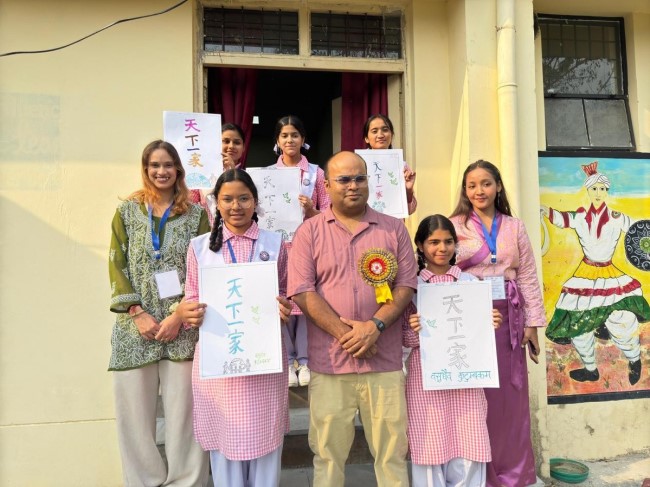
Professor Shanky Chandra (center), head of the Department of Chinese Studies at Doon University, northern India, is joined by students learning Mandarin. [Photo provided to China Daily]
Every school day, Class XII student Tanu Rawat travels around 4 kilometers by bicycle to reach her school in a remote village in northern Indian so she can learn Mandarin.
Rawat, an underprivileged girl from a village in Pauri Garhwal district, can learn Mandarin because her school is entirely funded by the federal government.
The 18-year-old daughter of an agricultural laborer believes learning Mandarin will bring new opportunities to her.
She hopes to pursue higher-level studies in the Chinese language and Chinese literature, and wants to be a teacher of Mandarin because there is a lot of demand among students in the state wanting to learn it.
Apart from learning Mandarin, she reads a lot about China.
China is India's immediate neighbor and one of the leading economies in the world, Rawat said.
"I should not miss this opportunity to learn it as our school is conducting a one-year Mandarin language course free of cost and providing books and other study materials free of cost as well," she said.
Rawat is studying alongside her science stream at Shaheed Lance Nayak Dhanveer Singh Rana, a school run by the government that is surrounded by lush green foothills in a remote village in Pauri Garhwal district.
Around 43 students in class XII at the school are learning Mandarin.
Bhawna, another class XII student learning Mandarin, thinks learning it could be a bonanza for her in the future because it could help her find a good job, not necessarily in India but in the international job market. Bhawna's father drives an auto rickshaw.
Government schools in Pauri Garhwal district have introduced Chinese language classes for the first time, marking a significant milestone for the local education system and around 20 government schools there are imparting Mandarin language skills to around 300 students, most of them impoverished.



